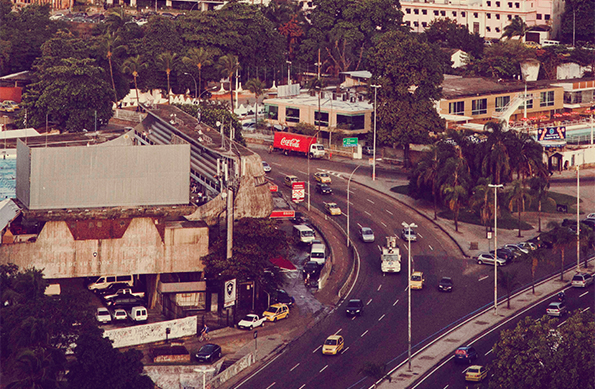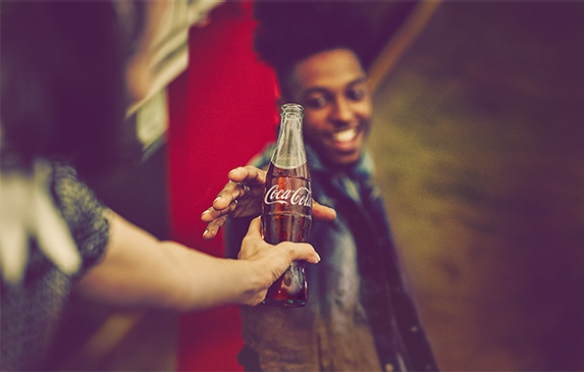Five Strategic Actions

1. WE FOCUSED ON DRIVING REVENUE AND PROFIT GROWTH
Each of the 200-plus nations we serve plays a critical role in our growth plans.
We used segmented revenue growth strategies across our business in a way that varied by market type. And we aligned our employee incentives accordingly. In emerging markets, we focused primarily on increasing volume, keeping our beverages affordable and strengthening the foundation of our future success. In developing markets, we struck a balance between volume and pricing. In developed markets, we relied more on price/mix and improving profitability by offering more small packages and more premium packages like glass and aluminum bottles.
Creating value for our Company and customers looks different in different countries, and we did a good job segmenting our markets to drive revenue growth in 2015. While we still have more to do, we were encouraged by our results. Globally, price/mix rose 2 percent as did volume, helping increase organic revenue 4 percent. We also gained worldwide value share in our industry.

2. WE INVESTED IN OUR BRANDS AND BUSINESS
Healthy businesses require continuous investment. We made a choice to invest in more and better marketing for our brands, increasing both the quantity and quality of our advertising. We increased spending on media advertising by more than $250 million, and we used these funds to share stronger, more impactful ads.
At the same time, we invested across our expansive beverage portfolio. We improved our position in the energy category with a strategic new partnership with Monster Beverage Corporation. We invested in brands like Suja, a line of premium organic, cold‑pressed juices, and agreed to buy China Green Culiangwang, a plant‑based protein beverage brand. We also expanded to nationwide the U.S. distribution of fairlife ultra‑filtered milk.
In 2015, we developed our first global marketing campaign to support the entire Coca‑Cola Trademark of Coke, Diet Coke, Coke Zero and Coca‑Cola Life. Launched in early 2016, “Taste the Feeling” emphasizes the refreshment, taste, uplift and personal connections that are all part of enjoying an ice‑cold Coca‑Cola. With this campaign and our broader “one brand” strategy, we’re letting consumers know they can enjoy Coca‑Cola with calories, fewer calories or no calories and with or without caffeine. The choice belongs to each individual, every time he or she reaches for a delicious and refreshing Coca‑Cola.

3. WE BECAME MORE EFFICIENT
As we took steps to rebuild our growth momentum, we knew we needed to invest in more and better marketing while also increasing our financial flexibility. To these ends, we increased our efficiency and productivity while reducing costs.
Part of the solution was “zero‑based work”—a way of looking at our business that starts from the assumption that organizational budgets start at zero and must be justified annually, not simply carried over at levels established in the previous year. We also cut spending on non‑media marketing like in‑store promotions. And we found new savings in our supply chain around the world.
Overall, we were able to realize more than $600 million in productivity improvement in 2015, which we used to invest further in our brands and business and also to return to our shareowners.
For the future, we’re working to drive productivity and continuous savings across our Company and system. We see productivity not as an event or series of events but as an ongoing, day‑by‑day process of becoming stronger, leaner and ultimately better.

4. WE SIMPLIFIED OUR COMPANY
Few industries have changed more rapidly in recent years than the nonalcoholic beverage industry. Evolving consumer tastes and preferences, coupled with sweeping innovations in the retail and supply chain landscapes, have created an environment in which speed, precision and empowered employees determine who wins in the marketplace.
To seize this opportunity, we took steps to reshape our business. We looked hard at our operating structure and identified areas where we could be faster, smarter and more efficient. We removed a layer of functional management and connected our regional business units directly to headquarters. We streamlined a number of important internal processes and removed roadblocks and barriers that inhibited us from being as effective and responsive as we knew we could be.
Most importantly, we began to look at ways to enhance further the employee experience across our Company with the goal of creating the world’s most exciting, productive, fun and fulfilling career environment, with workplaces that nourish curiosity, learning, innovation and growth. While this journey has just begun, our associates have responded with the resolve, commitment and passion that have been hallmarks of Coca‑Cola leadership since 1886.

5. WE REFOCUSED ON OUR CORE BUSINESS MODEL
The Coca‑Cola Company has always been a creator of refreshing beverage brands. Today, our expansive portfolio includes more than 500 brands, including sparkling beverages, juices and juice drinks, coffee, tea, sports drinks, water, value‑added dairy, energy and enhanced hydration drinks. Among these brands are 20 that generate more than a billion dollars in annual retail sales.
Another core competency has been our ability to lead the world’s most sophisticated system of independent bottling partners while creating value for our retail and restaurant customers. Over the years, we’ve acquired and managed a number of Coca‑Cola bottling partners with the aim of improving performance, optimizing manufacturing and distribution systems, and ultimately refranchising the bottling territories back to independent status.
In North America, we took aggressive steps in 2015 to accelerate the refranchising of Company‑owned bottling territories with the goal of completely refranchising our North America bottling system by year‑end 2017. We also announced a transaction to form a unified new bottling partner in Western Europe and took action to improve our bottling system in Southern and East Africa, Indonesia and China. By year‑end 2017, we expect Company‑owned bottlers to produce just 3 percent of our global volume, down from 18 percent today.

